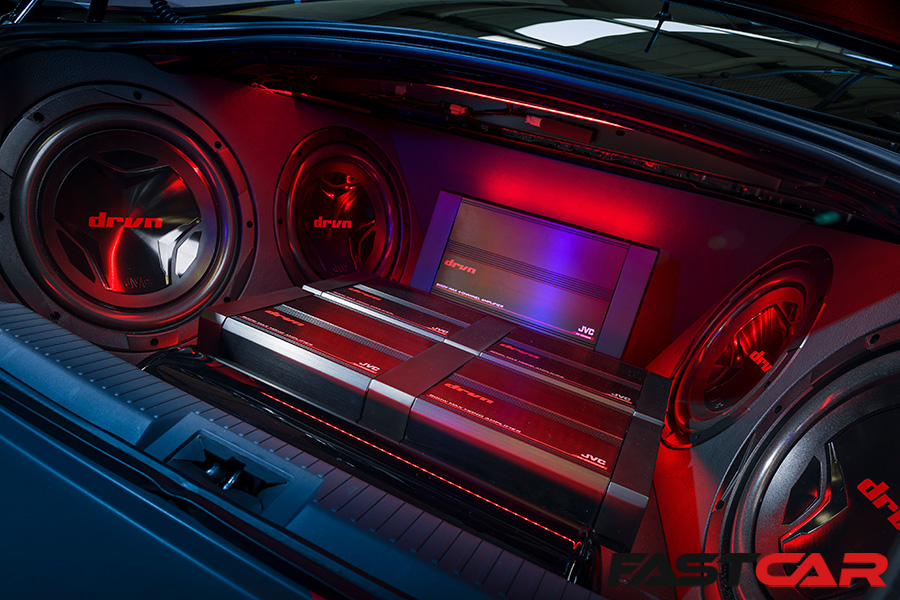We take a deeper dive into the world of car audio; here’s everything you need to know about an audio amplifier and why they are needed if you’re serious about sound.
Every speaker needs some sort of amplifier to work effectively and the bigger and stiffer the speaker, or subwoofer, the more powerful the amplifier it will need to get moving. The best car amplifiers do this job effortlessly. Car speakers are ‘moving coil drivers’. That means they use the music signal to electromagnetise their voice coils and move their cones, creating the sound wave that goes to your ears.
Because the music signal from your CD or streaming service is far too weak to move the speaker on its own, an amp is needed to beef it up on the way. So in summary, an amplifier amplifies the music signal. It really is that simple, folks.
Head unit amplifier
All car stereos and head units have a built-in amplifier. Aftermarket versions usually pack 4x50Watts or so and stock head units a little less. Normally the aftermarket versions are powerful enough to run a decent set of speakers, but they’re never going to set the world on fire or offer big boom-boom. And they won’t have the juice to run a subwoofer either. So in this guide we’re more interested in external amplifiers. That big slab of electronics you usually keep in your boot to give your system the strong kick up the backside it most thoroughly needs to get the best out of your speakers and get your music singing.
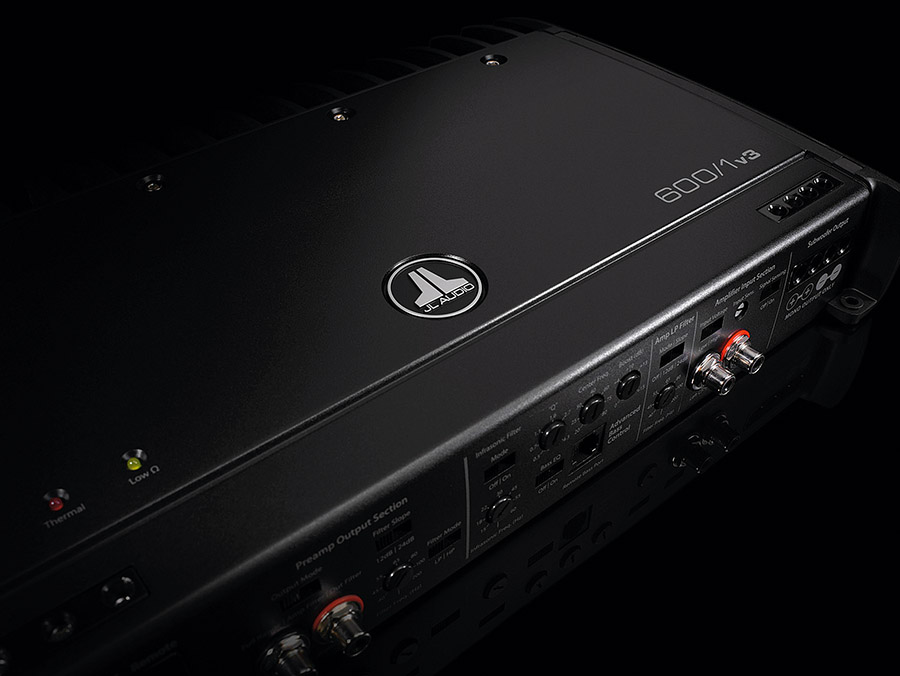
How does an amplifier work?
Trying to explain exactly what every part of the amps circuit does would be a bit pointless and if you’ve ever opened one up, you’ll know exactly why. So, as most of us don’t have a PhD in electronics, we’ll just take it for granted that the signal goes in one end and comes out bigger at the other. What’s more important for making your choice is the fact that there are four main circuit configurations and these denote the class of the amp. Class is all about power supply and how the amplifier makes use of the direct current.
What is a Class A amp?
These draw all of the power all of the time, meaning the output can really hit you fast. It’s like having a bucket of power that’s always full and ready to do its job. Said to have superior sound and the very best quality, they are generally inefficient and run very hot. That means, for the current it’s eating up, a lot is lost to heat – hence a relatively low output. True Class A amps are rare and very costly.
What is a Class b amp?
Class B amps make the power as they need it. Compared to Class A amps these are a lot more efficient and, in turn run, very cool. They do bring a problem with them though and that’s distortion at low levels, causing all sorts of problems for subwoofers. These are relatively inexpensive and used to be very popular but have been largely overtaken by A/B amps now.
What is a class A/B amps?
These are the best of both worlds. A/B amps cut the distortion at low levels by running as a Class A, then switch to a Class B when you turn them up. Nowadays these are the most popular configuration on the market.
What is a class D amp?
Plenty of people (including some manufactures) call these digital amps, but strictly speaking that’s wrong. They are however mega efficient ‘digital switching amps’, serving up massive power and properly cool running. The problem they bring is mega distortion in the mid and high frequencies, so they’re generally reserved for powering subs. They’re all about the bass.
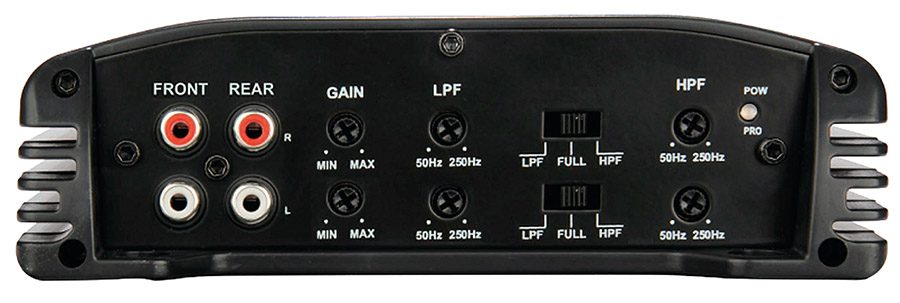
What are amplifier channels?
The channels are the output to the speakers. And generally, er, speaking, the amount of speakers you decide to run will tell you how many channels (or amplifiers) you need. There are various amp configurations on the market, from a single channel Class D monoblock, right up to seven or eight-channel monsters, but by far the most popular are the one, two and four channel amps. Talking in general, each speaker (unless it’s a multi voice-coil sub) will need one channel (both positive and negative connections) to run it.
What is bridging?
This is all about versatility and the most common way to run a subwoofer (assuming you’re not simply using a single channel amp). It’s basically a way of making two channels into a single, more powerful channel. For example you could take a four-channel amp (4x100Watts) and run two speakers with a channel each (at 100Watts) and bridge the other two to run your sub (at around 200Watts). Most two and four channel amps are bridgeable, but it’s always worth checking to make sure. Most five and seven channel amps have a separate dedicated sub channel ready to do the job anyway.
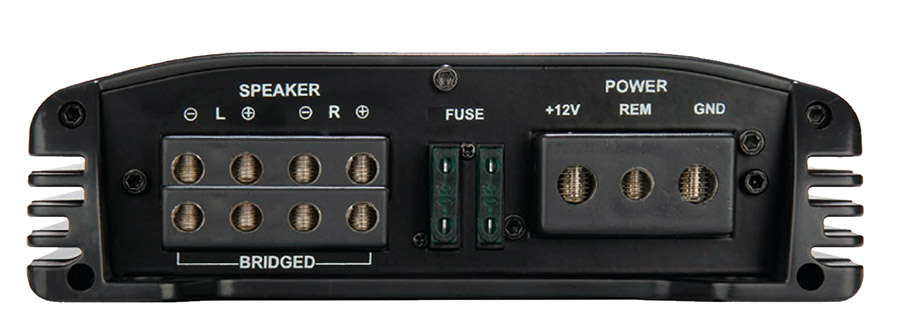
Understand amp channel configurations
Trying to demonstrate how to wire every amplifier here would be impossible, but to get an understanding we can use a two-channel amplifier as an example. You can either run two speakers, or two subwoofers or bridge the channels to run a more powerful subwoofer.
There is also Tri-Mode, where you can wire in two speakers and a sub into the same amplifier by straight-wiring and bridging at the same time. Although for this you will need to make sure you run the correct high and low-pass filters for each speaker (we’ll get onto that in a bit).
Finally, you can run multiple subs in series or in parallel, but this will change the resistance and the load on the amplifier – that’s where it gets really complicated, especially with multi-voice coil subs.
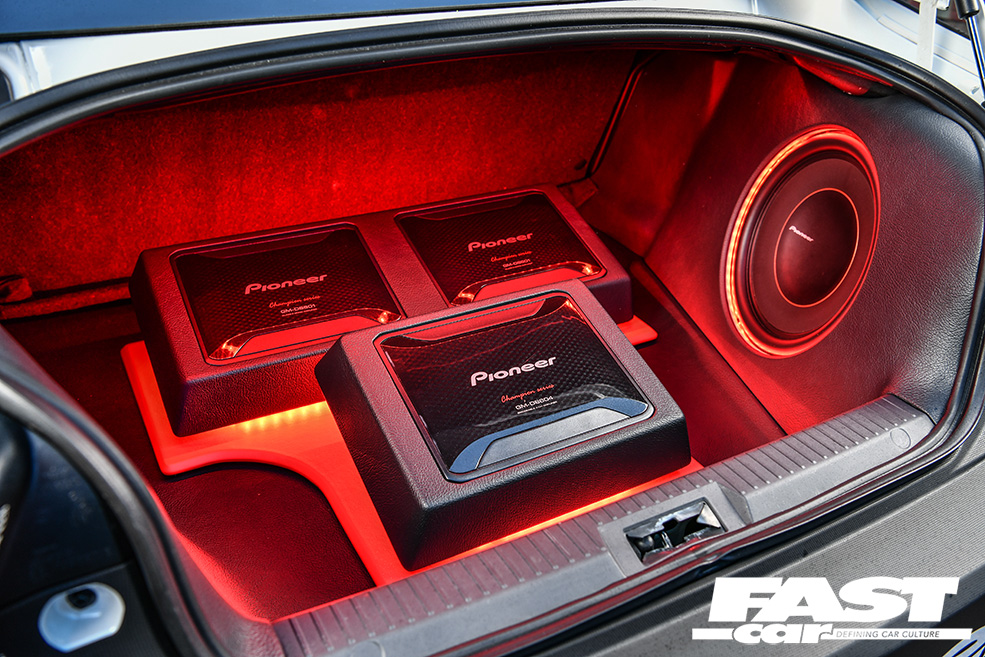
Multi-amplifier setups
So, does it matter if you run two amps when one larger amp could do the job? To be honest, apart from the extra wiring, no it doesn’t. Some prefer to run a dedicated two-channel or monoblock for a sub and a two or four channel for their speakers. Others may prefer a single five-channel amp. Either will work and it’s down to personal preference, the look of your install, how much space you have or what sort of sound you’re looking for.
If you want to run four 100Watt speakers and a 5000Watt sub for scaring old ladies it’s unlikely you’ll find an all-in one amp to do the job. If the power ratings are relatively alike and you’re going for sound quality, things are entirely different. It’s worth remembering though, an all-in-one system amp will cost more to replace should it go wrong than simply replacing one of the others.
Active Subwoofers
We already know that you need a powerful amp to move the cone on a sub, that’s why some come with an amplifier already built into their enclosure. Although most audiophiles feel it’s cheating a bit, it’s still worth considering. Generally the amplifier and sub will be perfectly matched and the whole system dead easy to wire in. It’s also pretty easy to remove should you temporally need your bootspace back.
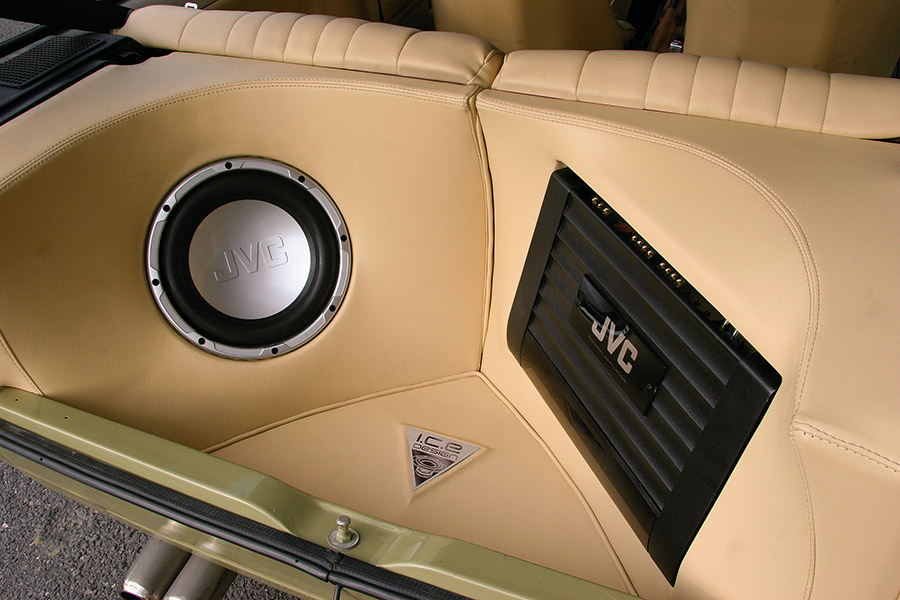
Power Ratings
Watts is the measure quoted for Amplifier output. So a 200Watt two-channel will generally be a 2x100Watt amplifier, a 200Watt four-channel 4x50Watts and so on. Bear in mind amplifiers with a dedicated sub-channel will state that too, so a 600Watt five-channel could be 4×100+1x200Watts.
Just to confuse things even more, there’s the higher peak power figure manufactures love to throw around. This is the power that, in perfect conditions, a scientist probably got out of it for a millisecond on a test bench. Then there’s the RMS (or Route Mean Square) figure, which is a clearer indication, and generally regarded as an amp’s true power, because it’s the continuous output. Usually this is the figure you’re looking for.
Finally, although you’ll be matching your sub or speaker using these figures it’s not absolutely set in stone. Just remember you’ll do much more distortion damage underpowering your speakers while you’re blasting them, than running an under-worked, more powerful amp with the gain turned down.
True power
So, how do you know that 2,000Watts on the box is the actual output? Well chances are it isn’t. It’s worth taking these peak power figures with a pinch of salt.
There are various ways of checking the real output, but the easiest is to take a look at the fuse. True power is equal to voltage (Volts) times current (Amps). Nearly always you’ll be working with a 12Volt system, so if you have an amplifier that’s rated at 1000Watts RMS (2x500Watts), that means it will need just over 80Amps of current. If this amplifier is only packing a 40Amp fuse, then you know the maximum output can be 480Watts or 2x240Watts (12Volts x 40Amps).
Then you have to consider the efficiency. Amps are better nowadays but most are still only between 50 and 80 per cent efficient, so that could take our amplifier down to 2x120Watts true power – not quite the 2x500Watts you thought you were getting, right? The short of it is, go to a reputable manufacturer. They’re much less likely to want to bamboozle you with silly figures.
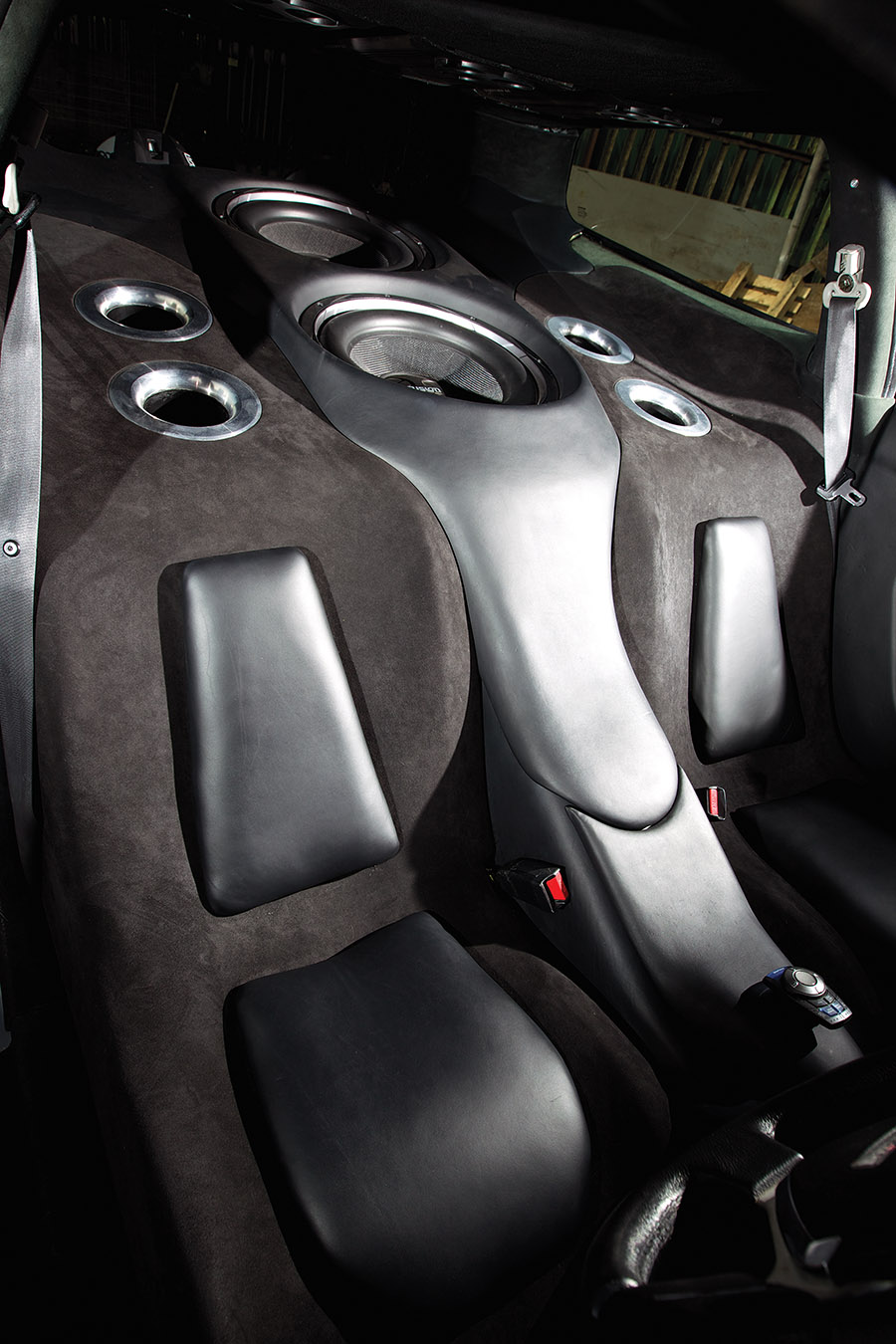
Impedance
This is the electrical resistance of the speaker (or load) on the amplifier and it’s measured in Ohms. It’s a complicated business, especially if you’re getting into the really heavy stuff, but it’s one of the most important figures you’ll find in car audio.
Put simply, the lower your speaker’s impedance, the more power it’ll suck out of the amp to drive it. It’s like having a bucket of water with two holes. The bigger hole will allow more water to flow out because it offers less resistance than the smaller hole. That’s why an amp rated at 500Watts @ 4Ohms but 1000Watts at 2Ohms – there’s half the electrical resistance.
Most audio experts say it’s best to run your setup at the lowest possible resistance the amplifier can handle, to avoid a loss in potential power – a 1000Watt 2Ohm amplifier running at 4Ohms represents a 50 percent loss. Even so, be careful and stick to the manufacturer’s guidelines. If you ran the amp above 1Ohm the speakers would be trying to suck out 2000Watts. If it’s not designed for that it would probably just burn up.
Wiring impedance
Most car speakers and subs will put a 4Ohm (or sometimes 2Ohm) load on an amplifier when they’re wired normally over one channel. This only changes when you start wiring in multiple subs in series or parallel. It becomes increasingly important to think about how you wire your speakers in, because doing it in series increases the load and wiring in parallel will decrease it. With two 4Ohm subs, for example, in series they would place an 8Ohm load on an amplifier, but wired in parallel that load would drop to 2Ohms. So, if your amplifier rated at 1000Watts @2Ohms, parallel is the one to go for, at 8Ohms you’ll only be getting 250Watts.
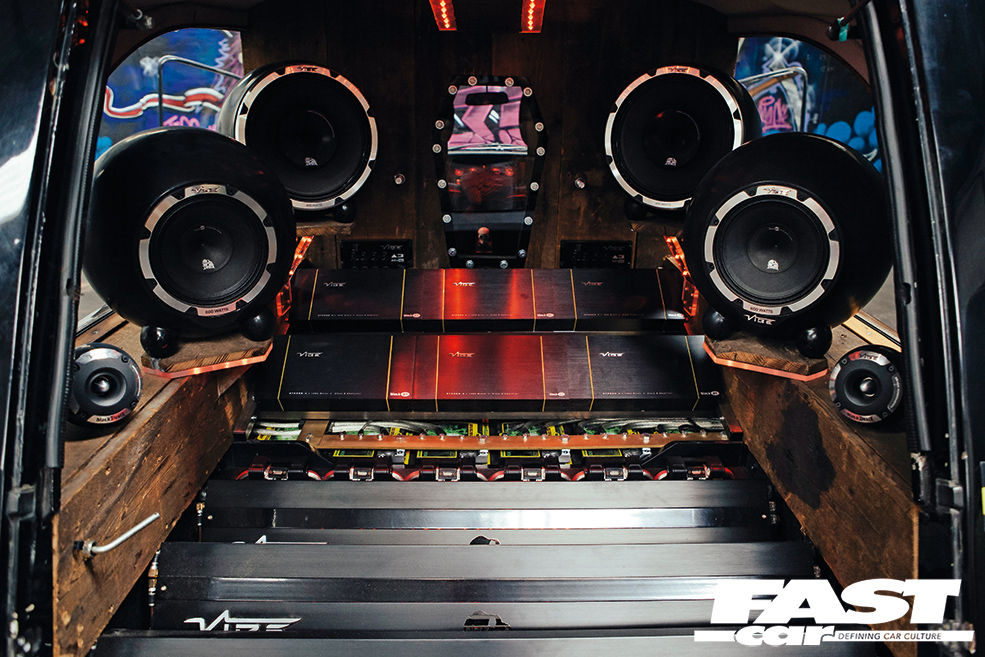
Strapping amplifier
Only serious bass heads need apply here. But sometimes a speaker needs far more power than a single amplifier can deliver. Obviously it’s only really when you want to run a 2000Watt sub to show off or compete in a sound-off competition, but the way it’s done is by strapping multiple single-channel amplifiers together to run a single channel. Basically it’s like bridging but with two amplifiers and usually reserved for high-end units. This process doubles the output at twice the resistance. So if you strapped two 1000Watt, 1Ohm amplifiers together, you’d get 2000Watts at 2Ohms and it would look a little something like this (see above)…
Safety measures and staying cool
No matter what amp you have, chances are it’ll get hot in operation. This is why it’s important to mount it in such a way that it’s got room to breath. Some high-end amps have built in fans, but most simply use their cover as a heat sink to dissipate the heat generated by the electronics. That’s why they need decent circulating air around them. Most nowadays will have a thermal protection circuit too, and these will cut the power to try and prevent any damage from thermal overload. But it’s best to get the mounting right in the first place. If your amp is cutting out, check this first before you stick it in the bin. It’s probably not broken at all.
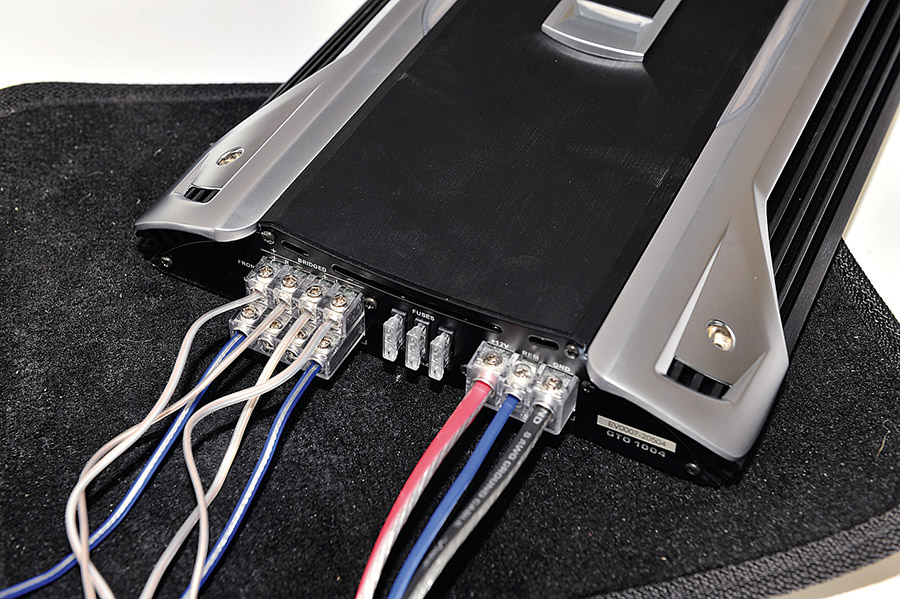
Power cables
The rest of the wiring is pretty simple. Unlike a head unit, a powerful amplifier demands a lot of current and that’s why they connect directly to the battery using some pretty hefty cable. The more power an amp uses, the thicker this cable needs to be to keep up with demand. Again it’s like water flowing down a pipe, the thicker the pipe the more water will flow. Cables come in gauges from about 12 gauge (about as thick as a human hair) to 0000 gauge (which is the stuff they use to hold up bridges). Most car audio installs use eight, four or two gauge, sometimes 0 gauge in really serious applications. Luckily there’s plenty of all-inclusive wiring kits on the market that’ll be power rated.
Remote wire
The remote, fondly known as the ‘blue’ wire is the other thing you need to know about. This connects the head unit and the amplifier and tells the amp when to turn on and off. Without it, the amp would be running and drawing power all the time – a great way to kill your battery. The exception is a new range of posh amplifiers with ‘signal sensing’ technology. These simply turn on automatically when the head unit sends the music signal. Clever stuff.
RCAs
So how does the signal get to the amplifier in the first place? That’ll usually be via the RCA leads. These plug into the head unit pre-outs and the corresponding plugs on your amp. Some of the more upmarket amps and head units have multiple pre-outs meaning you can send and tweak an independent signal for the sub, front and rear speakers. This is particularly useful in setting up a system for supreme sound quality.
Earth
The earth, or ground cable, is the Yang to the power cable’s Ying and the place where many go wrong, by fitting one that’s too thin. For the perfect setup it needs to be the same gauge as the power cable. Think of the power circuit as a river (cables) going in and out of a lake (the amp). They need to be the same size and capacity to effectively flow the same amount of water in the same time. Get one smaller than the other and it’ll cause all sorts of trouble..
Filters
So how do you know that the right ‘beefed up’ frequency is getting to the right speaker? This is all done with filters. The best quality amplifiers come with built-in highpass and lowpass filters used on each channel, these let the low frequencies ‘pass’ to the sub while filtering out the higher frequencies. And the higher frequencies pass to the other speakers while filtering out the lows. It’s a simple system, but it makes all the difference.
Line drivers
The fact we usually mount amps so far away from head units causes problems in itself, because the weak signal from the source has to travel the length of the car before it can be amplified. Because of that it stands much more chance of picking up interference through the RCA leads along the way. To combat this many high-end systems use a line driver close to the head unit, which is basically a kind of mini amp that makes the source signal stronger and more resistant to interference. These also help to get rid of any background hiss, by raising the voltage of the signal. Although many high-end head units already do this with their special 4.5Volt pre-outs.
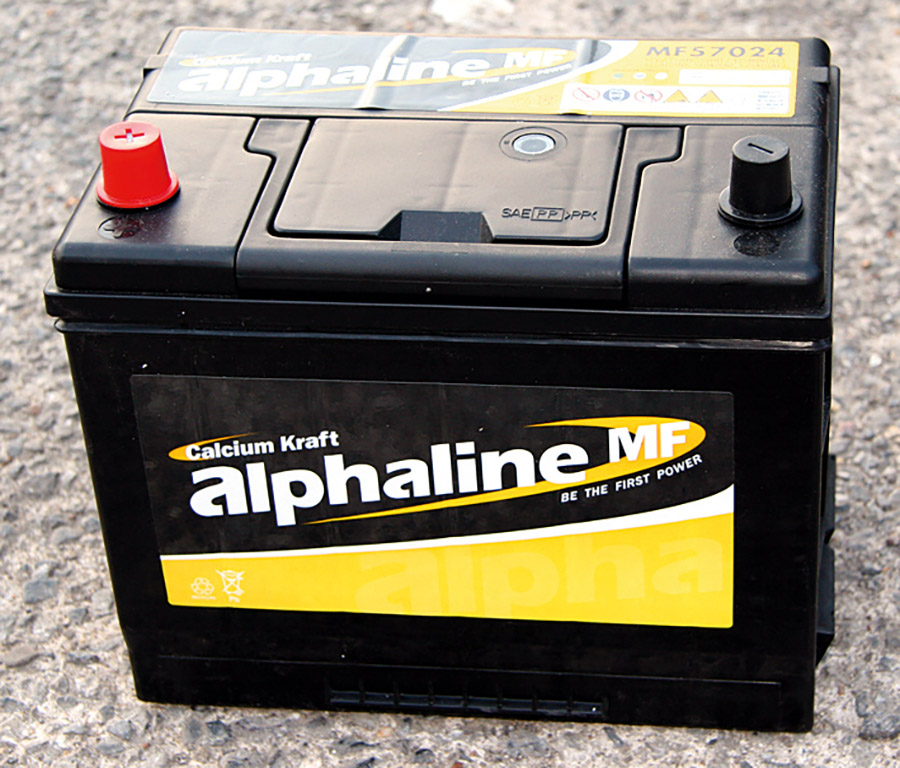
Power caps
If you’re thinking about running serious power it may be worthwhile looking at capacitors too. A power cap is wired between the battery and the amplifier and used as a powerbank, a huge bucket of stored current, that can be drawn quickly when the amp needs some extra grunt for those serious bass drops. The idea is that it’ll take the power out of that and not straight from you battery, to avoid putting strain on all the other electrics. Ever noticed someone’s lights going dim when the bass hits rock bottom? They haven’t got one of these.
More power needed for your amplifier?
OE spec batteries are fine for a mild setup, but as soon as you start cramming in loads of amps you’re going to need a power upgrade too. The whole charging system is vitally important, so if you’re going mad on the audio you may need to bung in extra batteries, a split charging system and an uprated alternator. For us normal human beings though, you can generally get away with buying the biggest battery, with the highest cranking available, for the space.

